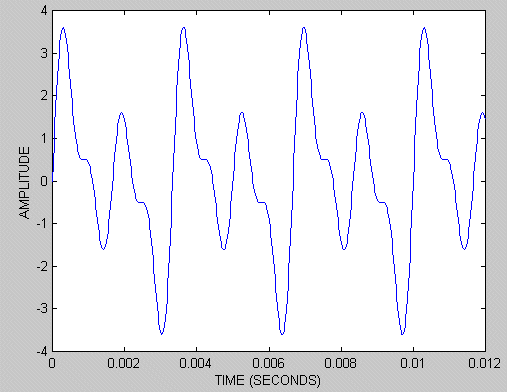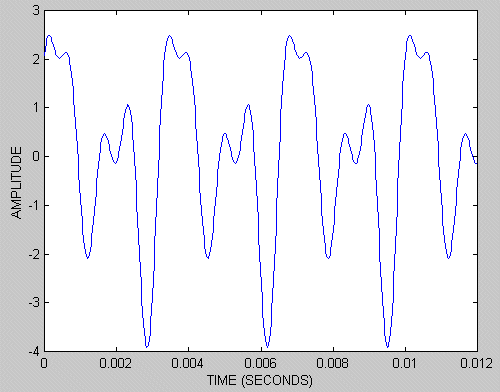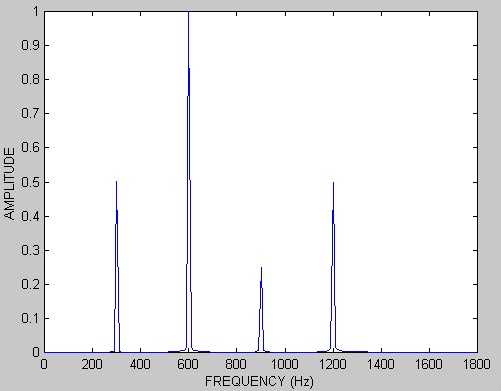Ohm's Law of Hearing
When we examine the spectrum of a signal we see the relative contributions of the harmonics; however, the plot of the spectrum does not give any idea of the relative phase between the components. In a similar fashion when our ear acts as a mechanical spectrum analyzer it only responds to the amplitude of the various harmonic components not their phase. The fact that we cannot hear phase differences between the different components of a tone is called Ohm's law of hearing. Look and listen to the following example.
Here is a complex tone:
Here is a plot of a small segment of the waveform.

Here is a second tone that has exactly the same spectrum but different phses between the various harmonics. Listen:
Here is a representation of the waveform in time:

Compare the two waveform shapes--they are quite different yet they sound the same. The only difference between the two complex tones is the phase change between the various harmonics.
Finally, here is a plot of the spectrum of each of these tones:

Questions
Just for practice you should be able to look at the above graph and read off the frequency of the fundamental of this note. You should be able to get the same information from each of the amplitude versus time plots that came before it.
Send me an email at wroberts@mtsu.edu
Contact Information
Dr. W. M. Robertson
MTSU Box X-116
Murfreesboro, TN 37132
Ph. (615) 898-5837


